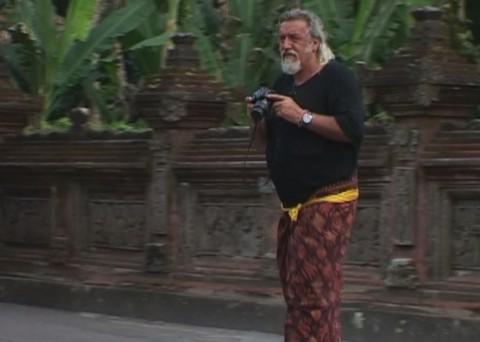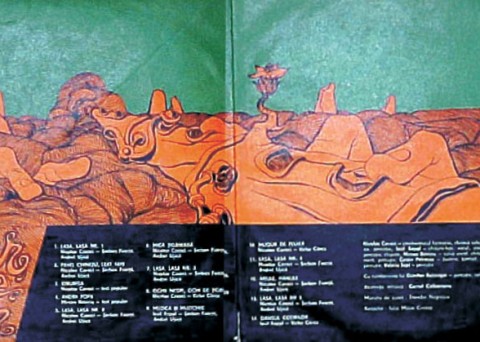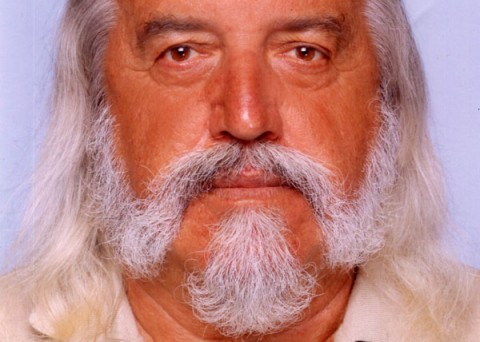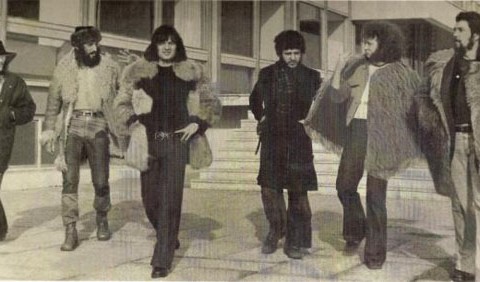Project details
The story of our days – interview by Adriana Carcu
Interview published in 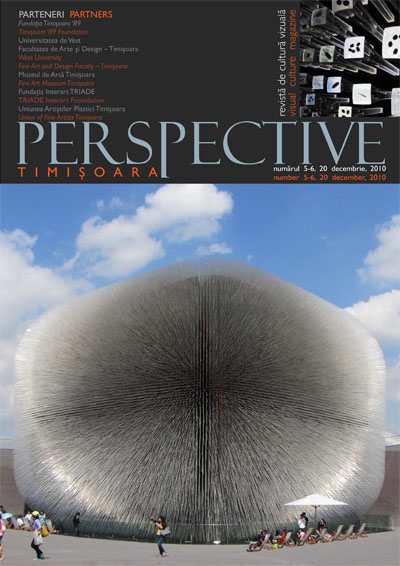 PERSPECTIVE Magasine, number 5-6, page 14
PERSPECTIVE Magasine, number 5-6, page 14
Romanian rock star engineers a career in art
By Sarah Palmer
WELL- TRAVELLED artist Sepi Valeriu was a Romanian rock star and an engineer before devoting himself wholly to fine art. More than 25 years ago he was a member of the group Phoenix, whose status in his home country rivalled that of the Beatles.
The group filled stadiums and broke record sales, and Valeriu put his artistic skills to good use designing their LP covers and posters.
These days he is based in Singapore, but has made the trip to Perth for an exhibition of his floral and landscape paintings at Accent Gallery in Subiaco.
Valeriu followed up his degree in fine arts with a degree in mechanical construction engineering in the late 60s, returning to fine arts to pursue postgraduate studies.
His skills in these disparate disciplines have proved to be mutually beneficial, particularly in the realm of public art for building and development projects.
Valeriu left Romania to work in Germany as a graphic designer at the age of 41. Five years later, in 1991, he learnt of a development in Singapore – the Maritime Showcase Project – which required the services
of someone with knowledge of both construction and art.
Valeriu was the perfect candidate and he took up the post eagerly, fulfilling a dream to spend time in Asia.
The project lasted six months but Valeriu has been in Singapore ever since, acting as an art consultant on building projects and accepting commissions for sculptures, mosaics, murals and paintings.
His acrylic, mixed media and pastel works at.
Accent celebrate the colour and beauty that has made Valeriu sp popular in Asia.
Working in this environment has been enough to provide Valeriu with a new zeal for his art “like having a new brush or a new pencil”.
“I’m enjoying the colours more,” he says. “I used to make drawings that were quite dark but now I’m enjoying using colour. “Working in a serious industrial country like Germany you forget a little bit that you are part of nature.”
Valeriu exhibited in Fremantle last year as part of the Colour Culture Connection group – artists from different cultural backgrounds who met in Singapore and continue to see each other and exhibit their work in different countries.
His exhibition runs at Accent, 23 Railway Road, Subiaco until March 26. Also on show are works by his pupil Valerie Cain.
VALERIU SEPI
By Brother Joseph McNally
There is something ageless in the work of Valeriu Sepi. It is as if he combined, within his painting style, the realism and idealism of the ancient Greeks. He transports us back in time to around the year 100 when Trajan, the Roman Emperor had completed his conquest of the Dacians by establishing a garrison of Roman soldiers along the Danube River. That Colony has been perpetuated in the present country Romania. Valeriu inherited an arts tradition from those ancient times, which he calls in their ancient Latin language “In Spiritv Corporis”. That roughly translated as “In the soul of the body”. Roman Art derived largely from Greek concepts, which separated realism (body) from idealism (spirit). “l/hen Marxists took control of the country and forced materialism upon all, including artists, they little realized how much the spirit of the artist infused socialist realism. If the romantic aspect of his work emanates from his Romanian ancestry it is true that his expressionism comes from a German mother.
Valeriu’s painting of the human body says it all. His large paintings are executed on several panels, which can actually be arranged in different ways. Since the spirit of the paintings is indivisible then each section shares that spirit and it should be possible to view the group abstractly in any combination.
This is a very good show.
From Death upon Death
By Victor Carcu
Karlsruhe, 12.02.2005
After years on tum, in which we met sporadically, mostly rambling about art, the artist, and the world, mostly with a bottle between us, suspecting one another of creative death, here it comes long live the internet Sepi sends me per E-Mail his last work: “The Tripticon of the Crucifixion”.
I contemplated it abashed, as if it were real and not rendered by the cold blue LCD light. I realised, diving into it, that at the point where our direct contact has ceased, our perception of the artistic act carried on; nor similarly, identical. More lively and more intense than in the youth, the sum of experiences each of us fortuitously went through did not crystallize in handicaps, but reinforced our power of expression. We have reached the point where the Yellow Press cannot harm us anymore, the point where the cultural referral represents nothing other than the starters of the athlete who is about to break out into the reckless race of the self challenge, the point where, after you get rid of all your possessions, your fearlessly reveal yourself and let your ego lead you into the subjectivity of its experience, onto that unattained edge where poetry meets philosophy.
Without fear, Sepi, the painter, exposes himself to the collective perception by getting into those starters to blench relevantly and to resurrect from the shout of his own subjectivity, thus reviving the fact of the chronicle, rendering to it the flesh and the breath of the revealing moment that bums in the body of all humans endowed with a spark of reason and eyes that can see beyond geography.
Sepi’s tripticon, the deeper adjust in the rigor of the academic drawing, the more liberated emerges, like the light form the lightning, dazzling the beholder suffused in the pain of the spirit’s separation form the body. This mute cry escaped from the Christian chest and pagan depths, makes you forget the historical referral and it deafens you in the moment of the ascension with the wild power of the detail.
This new work of Sepi reminds me of another great introvert: Nichita Stanescu (Romanian poet); and his a poem where a woman in the pains of labor cries out of two heads hers and that of the (be)coming.
Sepi manages- from my perspective to fasten for the first time in painting, not so much the torment and the ordeal that have fascinated the old masters, but, from within the inner core of his being, he surprises the Caesarian section into the transcendental without using the historical lancet; I witness like wordless the completeness of this moment as the words of the New Testament sound in my ears: “From Death emerging, upon Death treading”. To be able to capture such a stroke of lightning on canvas, someone has had to die many a death.
The Choreography of Evolution: metamorphosis of the spirit
By Sian E’gay
Art Journalist
Trying to describe what the paintings of Romanian-born artist Valeriu Sepi are about is always a challenge. They are always masterfully executed because Sepi has long been the master of his medium. They are always mesmerising because no matter what the subject matter, his paintings always say something to the viewer.
Perhaps that is the secret of Sepi’s work; that underneath they are about us as human beings, and it is on that level they appeal to us. Many of Sepi’s previous works have focused on the human body; they have portrayed the beauty and movement that expresses the inner spirit of the person. It is a theme that may still be discerned in this body of work.
What the drawings capture is not the superficial erotic beauty that so many images of the body portray, but the beauty that most people do not see, and do not know exists.
Many of the paintings are of the sea, and for the artist the water represents the beginning of all things; from water life emerged, and to the water we strive to return, for only there are our bodies relived of their weight and limitations.
And so the artist moves on, line by line, brushstroke by stroke, guiding his audience on, urging them to look deeper into themselves. He leads us to the mountains, for the human spirit always looks upwards, seeking to free itself from the confines of being earthbound. Then in one single image – one painting that is as simple as it is profound – we find the answer! It is the answer to what Valeriu Sepi’s work is all about; it is the answer to that question every one of asks inwardly every day.
It is a painting of the sea at daybreak as the sun begins to rise above the horizon. The water changes from the blackness of nothingness and begins to take on the colors of the day. The heavy night air begins to expand and rise, and as it does, as people open their eyes to the promise of a new day, a new beginning, the sea birds also begin to rise.
They appear from nowhere and spread their wings, but they hardly seem to move. The air currents catch them and lift them up, higher and higher until they become dots in the morning sky and then disappear from view. As the birds rise above and into the unfolding day, we realize why we dance, why we are compelled to build monuments to ourselves. We are using the choreography of evolution so that one day we too will become like the birds, soaring high above the water, free of our bodies at last.


